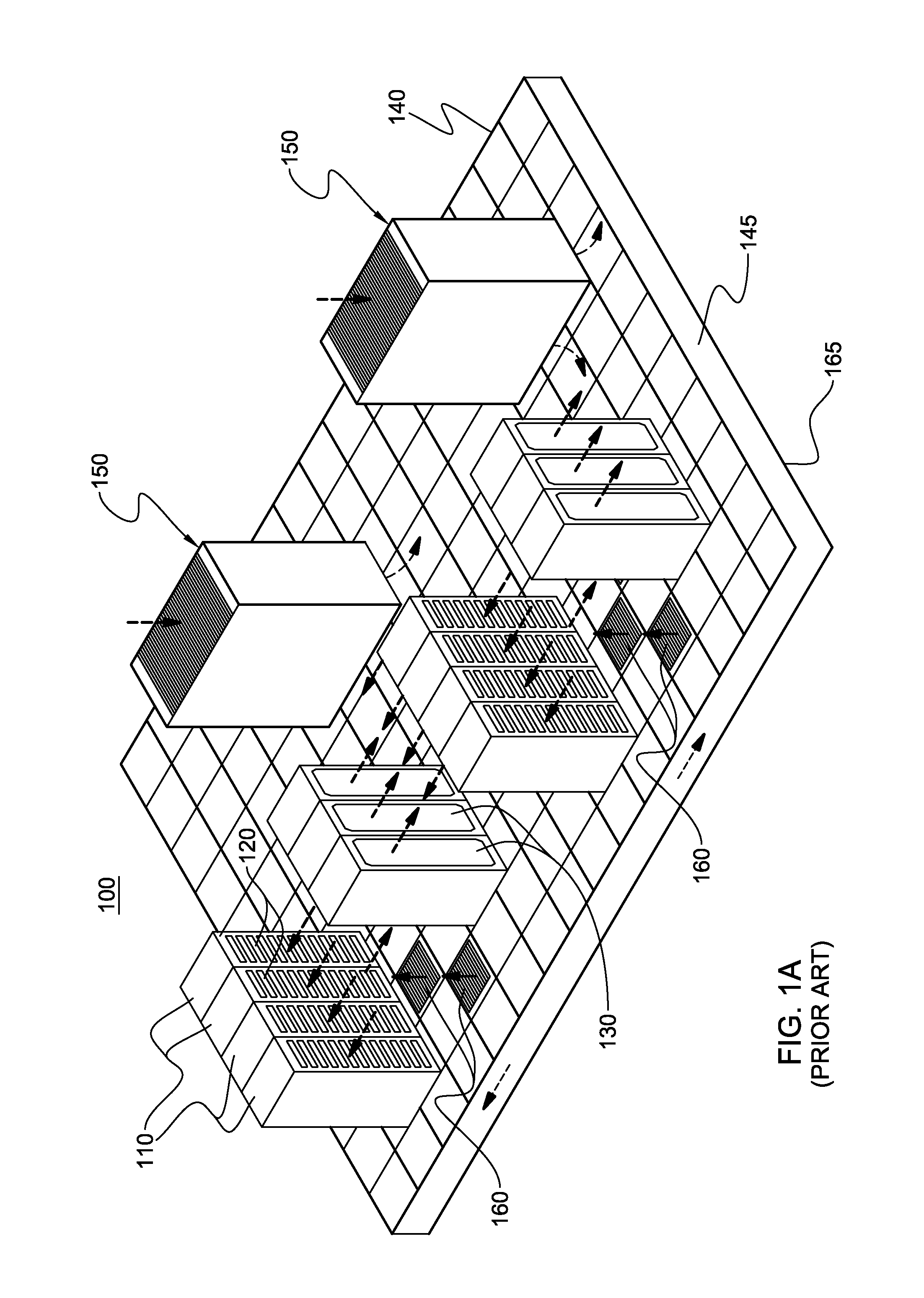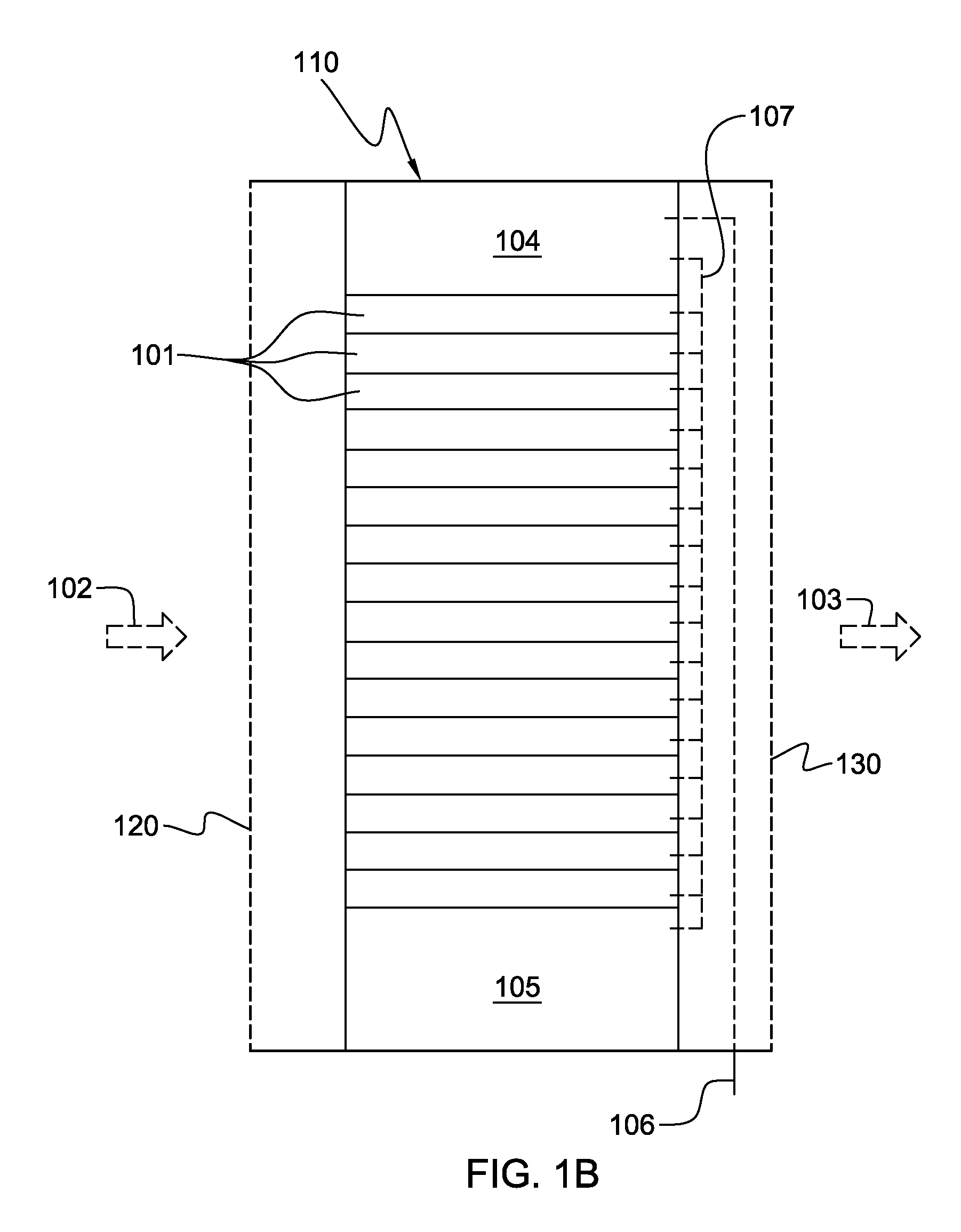Inlet-air-cooling door assembly for an electronics rack
a technology for electronics racks and door assemblies, which is applied in the direction of domestic cooling devices, electric apparatus casings/cabinets/drawers, instruments, etc., can solve problems such as cooling challenges, and achieve the effect of facilitating air-cooling of one or mor
- Summary
- Abstract
- Description
- Claims
- Application Information
AI Technical Summary
Benefits of technology
Problems solved by technology
Method used
Image
Examples
Embodiment Construction
[0034]As used herein, the terms “electronics rack”, “rack unit”, and “rack” are used interchangeably, and unless otherwise specified, include any housing, frame, support structure, compartment, blade server system, etc., having one or more heat generating components of a computer system or electronic system, and may be, for example, a stand-alone computer processor having high, mid or low end processing capability. In one embodiment, an electronics rack may comprise a portion of an electronic system, a single electronic system, or multiple electronic systems, for example, in one or more sub-housings, blades, books, drawers, nodes, compartments, etc., having one or more heat-generating electronic components disposed therein. An electronic system within an electronics rack may be movable or fixed relative to the electronics rack, with the rack-mounted electronic drawers of a multi-drawer rack unit and blades of a blade center system being two examples of systems (or subsystems) of an ...
PUM
 Login to View More
Login to View More Abstract
Description
Claims
Application Information
 Login to View More
Login to View More - R&D
- Intellectual Property
- Life Sciences
- Materials
- Tech Scout
- Unparalleled Data Quality
- Higher Quality Content
- 60% Fewer Hallucinations
Browse by: Latest US Patents, China's latest patents, Technical Efficacy Thesaurus, Application Domain, Technology Topic, Popular Technical Reports.
© 2025 PatSnap. All rights reserved.Legal|Privacy policy|Modern Slavery Act Transparency Statement|Sitemap|About US| Contact US: help@patsnap.com



